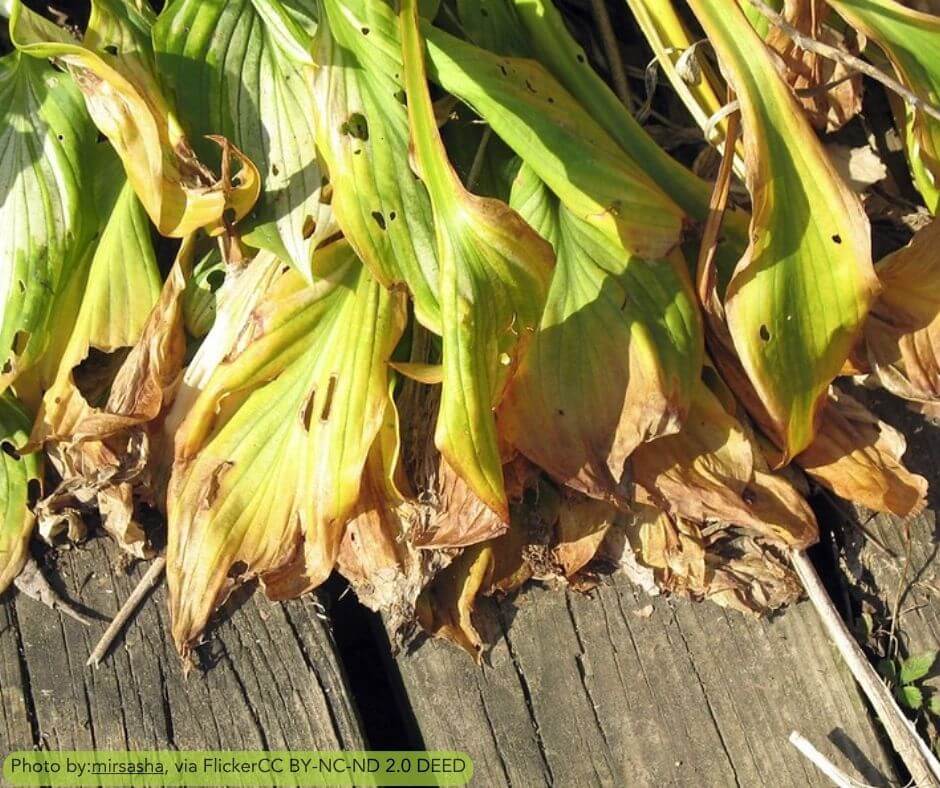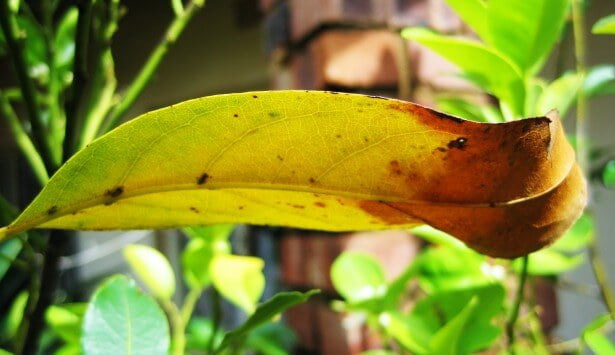Understanding the Causes and Solutions for Yellow Leaves in Plants: A Comprehensive Guide
Introduction: Yellow leaves On Plants: Understanding Plant Yellowing
Yellow leaves in plants, a common issue for gardeners and plant enthusiasts, can be a distressing sign. This article aims to demystify the causes of yellow leaves, offering practical solutions for maintaining vibrant plant health. Whether you’re dealing with indoor plants or garden varieties, understanding why leaves turn yellow and how to respond is crucial for any plant caretaker.
The phenomenon of yellow leaves, often referred to as chlorosis, can arise from various factors. Environmental stress, improper care, or even natural processes can lead to yellowing. By identifying the root cause, one can implement effective strategies to not only treat but also prevent this common plant ailment. Let’s explore these causes in detail and learn how to keep our plants thriving.
Causes of Yellow Leaves
Nutrient Deficiency
Nutrient deficiency is a primary cause of yellow leaves in plants. Lack of nitrogen, potassium, or magnesium, for instance, can lead to chlorosis. Nitrogen deficiency typically causes older leaves to yellow first, as the nutrient is redirected to new growth. Potassium deficiency, on the other hand, often shows as yellowing at the leaf edges, while magnesium shortage can lead to yellow patches between leaf veins.
Understanding the specific needs of your plant species is key to preventing nutrient deficiencies. Regular soil testing can help identify which nutrients are lacking. Adjusting your fertilization regimen accordingly can quickly address these deficiencies and restore leaf health. Remember, each plant has unique nutritional needs, so tailor your approach accordingly.
Watering Issues
Watering issues, both overwatering and underwatering, are common culprits behind yellow leaves. Overwatering can lead to root rot, depriving plants of oxygen and essential nutrients, resulting in yellowing leaves. On the flip side, underwatering causes plants to conserve water, leading to a loss of chlorophyll in leaves.
To avoid these issues, establish a consistent watering routine tailored to your plant’s needs. Factors like soil type, pot size, and environmental conditions play a significant role in determining water requirements. A good rule of thumb is to check the soil moisture before watering. Adjust your watering schedule seasonally, as plants typically require less water in cooler months.
Lighting Problems
Inadequate or excessive light exposure can also cause leaves to turn yellow. Plants with too little light may become leggy and develop pale yellow leaves, as they struggle to photosynthesize. Conversely, too much direct sunlight can scorch leaves, leaving them yellow or brown.
Adjusting your plant’s exposure to light can prevent and remedy yellowing leaves. If your plant is in a low-light area, consider using grow lights or moving it to a brighter location. For plants getting too much direct sun, provide shade or relocate them to a less intense light setting. Observe how your plant responds to these adjustments, and be prepared to experiment to find the perfect balance.
Pests and Diseases
Pests and diseases are another common reason for yellow leaves. Aphids, spider mites, and other pests can drain nutrients from plants, while diseases like root rot or fungal infections can impair a plant’s ability to absorb nutrients and water, leading to yellowing.
Regular inspection of your plants can help catch pest infestations or diseases early. Look for signs like sticky residue, webbing, or unusual spots on leaves. Employ appropriate pest control methods, such as insecticidal soaps or neem oil, and treat diseases with fungicides or by removing affected parts of the plant. Prevention is key, so maintain good plant hygiene and quarantine new plants before introducing them to your collection.
Natural Aging
It’s important to note that yellowing can also be a natural part of a plant’s life cycle. As leaves age, they may turn yellow and drop off to make way for new growth. This process is especially common in fast-growing or seasonal plants.
Distinguishing natural aging from more serious issues is crucial. If yellowing is isolated to older, lower leaves and the plant otherwise appears healthy, it’s likely a natural process. However, if yellowing is widespread or accompanied by other symptoms like wilting or stunted growth, investigate further for underlying issues.
What is Causing My Plant Leaves to Turn Yellow? – Diagnosing Yellow Leaves
Identifying Specific Causes
Diagnosing the specific cause of yellow leaves requires careful observation and sometimes a bit of detective work. Look for patterns in the yellowing – is it occurring in older leaves, new growth, or all over the plant? Are there other symptoms like spots, wilting, or stunted growth? Consider recent changes in care, such as watering frequency, fertilizer application, or relocation, which might have stressed the plant.
Consult resources specific to your plant species for more tailored diagnostic tips. Plants have diverse needs and respond differently to stressors. For example, yellow leaves in a succulent may indicate a very different issue than in a fern. Understanding these nuances can guide your diagnosis and subsequent care adjustments. Have a look at the Plantinfo.co.za plant database or search your plant on our website.
Tools and Techniques for Diagnosis
Several tools and techniques can aid in diagnosing yellow leaves. Soil moisture meters, for instance, can help you assess if overwatering or underwatering is an issue. Nutrient test kits can reveal deficiencies in the soil. Additionally, magnifying glasses can be useful for spotting small pests or disease symptoms on leaves.
Digital resources, such as plant care apps and online forums, can also provide valuable insights. These platforms often offer plant-specific advice and a community of fellow plant enthusiasts who can share their experiences and solutions. Don’t hesitate to seek expert advice from local nurseries or extension services for persistent or complex issues.

Solutions and Treatments for Yellow Plant Leaves
Adjusting Watering Practices
Optimizing your watering practices is a crucial step in addressing yellow leaves. The goal is to provide enough water to meet your plant’s needs without causing stress. Implement a watering schedule based on your plant’s specific requirements, considering factors like pot size, soil type, and environmental conditions.
If you suspect overwatering, allow the soil to dry out more between waterings. Conversely, if underwatering is the issue, gradually increase watering frequency. Be mindful of seasonal changes in water needs. Most plants require less water during the winter months. Additionally, using pots with proper drainage and choosing the right soil type can prevent water-related problems.
Nutrient Management and Fertilization
Effective nutrient management involves understanding and meeting your plant’s specific nutritional needs. Regular application of a balanced fertilizer can prevent nutrient deficiencies. However, be cautious not to over-fertilize, as this can lead to nutrient burn, manifesting as yellow or brown leaf tips.
Tailor your fertilization routine to the growth stage and type of plant. For instance, flowering plants may benefit from a phosphorus-rich fertilizer, while leafy greens might need more nitrogen. Slow-release fertilizers can provide a steady supply of nutrients, reducing the risk of over-fertilization. Remember, soil testing can guide your fertilization strategy, ensuring that you’re providing just what your plants need.
Optimizing Light Exposure
Providing the right amount of light is essential for preventing and correcting yellow leaves. If your plant is not receiving enough light, consider relocating it to a brighter spot or using artificial lighting. For plants suffering from too much direct sunlight, moving them to a location with filtered or indirect light can alleviate stress.
Monitor your plant’s response to changes in lighting. It might take a few weeks to see improvements, so be patient. Additionally, rotating your plants periodically ensures that all sides receive adequate light, promoting even growth and preventing yellowing due to light deficiency.
Pest and Disease Control
Effective pest and disease control starts with prevention. Keep your plants healthy and stress-free, as weakened plants are more susceptible to infestations and infections. Regularly clean leaves and inspect for early signs of trouble. Isolate new plants for a few weeks to prevent the spread of pests or diseases to your existing collection.
For pest infestations, identify the pest type and apply an appropriate treatment, such as insecticidal soap or neem oil. For diseases, remove affected leaves or parts of the plant and apply fungicides if necessary. Always follow the instructions for any treatment products and consider using natural or organic options when possible.
Pruning and Plant Maintenance
Pruning is an effective way to remove yellow leaves and promote healthy growth. Regular pruning not only improves a plant’s appearance but also encourages new, healthy growth. When pruning, use clean, sharp tools to make precise cuts, and focus on removing yellow or damaged leaves and any overcrowded or leggy growth.
Regular maintenance, such as cleaning leaves and checking for pests or diseases, can prevent issues leading to yellow leaves. Ensuring that your plants are in suitable pots with adequate drainage and refreshing the soil annually can also keep them healthy and vibrant.
Preventive Measures
Regular Monitoring and Care
Consistent monitoring and care are key to preventing yellow leaves. Regularly check your plants for early signs of stress, such as wilting, discoloration, or stunted growth. This proactive approach allows you to address issues before they escalate.
Establish a routine for watering, fertilizing, and inspecting your plants. Adjust care practices as needed based on seasonal changes or your plant’s growth stage. Remember, consistent care tailored to your plant’s specific needs is the best prevention against yellow leaves.
Choosing the Right Plant Environment
Selecting the right environment for your plants is crucial for their overall health. Consider factors like light, temperature, humidity, and airflow when choosing a location for your plants. Each plant species has unique environmental preferences, so research and understand these needs.
If you’re growing plants indoors, be mindful of factors like heating vents, air conditioners, and drafty windows, which can impact the microclimate around your plants. Outdoors, consider aspects like sun exposure, wind, and proximity to other plants. Creating an optimal environment will reduce stress and prevent issues like yellow leaves.
Yellow Leaves in Specific Plants
Yellow Leaves in Indoor Plants
Indoor plants often face unique challenges that can lead to yellow leaves. Limited light, inconsistent watering, and dry indoor air are common culprits. Assess the specific needs of your indoor plants, considering factors like humidity and light levels. Humidifiers, pebble trays, or grouping plants together can help maintain adequate humidity levels.
Be aware of the impact of indoor heating and cooling on plant health. Avoid placing plants near vents or radiators, as extreme temperature fluctuations can stress plants, leading to yellow leaves. Regularly rotating your plants can also ensure even light exposure and promote balanced growth.
Yellow Leaves in Garden Plants
Garden plants are exposed to a broader range of environmental conditions, making them susceptible to different causes of yellow leaves. Soil quality, outdoor pests, and weather extremes play a significant role. Conduct soil tests to ensure your garden has the right nutrient balance and pH levels for your plants.
Consider implementing companion planting, which can improve soil health and deter pests naturally. Mulching can help retain soil moisture and regulate temperature, reducing stress on plants. Additionally, choosing plants suited to your local climate and soil conditions can significantly reduce the risk of yellow leaves.
Expert Insights
Advice from Horticulturists and Botanists
Expert insights can provide valuable strategies for dealing with yellow leaves. Horticulturists and botanists recommend observing natural plant cycles and understanding that some yellowing is normal. They also emphasize the importance of a holistic approach to plant care, considering factors like soil health, plant genetics, and environmental conditions.
Consulting with local experts can provide region-specific advice, particularly beneficial for garden plants. These professionals can offer tailored recommendations based on local climate, soil types, and common regional pests and diseases.
Case Studies
Real-Life Examples of Remedying Yellow Leaves
Case studies offer practical examples of how yellow leaves have been successfully treated. One such example might involve a garden overrun with aphids, where introducing beneficial insects like ladybugs restored plant health. Another case might detail how adjusting watering practices revived an indoor plant collection suffering from chronic overwatering.
These real-life scenarios provide tangible lessons in plant care. They demonstrate the effectiveness of specific interventions and offer inspiration for addressing similar issues in your own plants.
Innovative Techniques
Latest Research in Plant Care
Staying informed about the latest research in plant care can offer new solutions for preventing and treating yellow leaves. Innovations in soil science, for example, have led to the development of more effective fertilizers and soil amendments. Research into plant genetics is also providing insights into disease resistance and stress tolerance.
Adopting cutting-edge techniques, such as using smart sensors for monitoring soil moisture or light levels, can enhance your plant care regimen. These technologies offer precise, real-time data, enabling more targeted and effective interventions.
Popular questions and awnsers about yellowing plant leaves:
What are the signs that a plant is suffering from nutrient deficiency?
A plant suffering from nutrient deficiency typically displays several signs, including yellowing leaves, particularly older leaves, which may turn pale green or yellow while the veins remain green. Stunted growth and smaller-than-usual leaves are also common indicators. Specific deficiencies present unique symptoms, such as purple or red tints in the case of phosphorus shortage, and interveinal chlorosis (yellowing between veins) for magnesium deficiency.
How can I tell if I’m watering my plants correctly?
Correct watering is indicated by healthy, vibrant foliage and steady growth. The soil should feel moist at a depth of about 5 cm for most plants. If the top few centimeters of soil are dry, it’s time to water. Additionally, the plant shouldn’t show signs of water stress, like wilting or yellowing leaves. Overwatering is often indicated by soggy soil and root rot, while underwatering results in dry, crumbling soil and drooping leaves.
Is direct sunlight harmful to all plants?
Direct sunlight isn’t harmful to all plants; some, like succulents and certain flowering species, thrive in it. However, for many plants, especially those native to shaded forests, direct sunlight can be damaging, causing leaf scorch and discoloration. It’s important to understand the light requirements of each plant species. Generally, most houseplants prefer bright, indirect light.
What are the common pests that cause yellow leaves?
Common pests that cause yellow leaves include aphids, spider mites, and mealybugs. These pests feed on plant sap, weakening the plant and causing leaves to turn yellow and drop. Look for tiny bugs, webs, or sticky residue on leaves as signs of infestation. Regular inspection and prompt treatment can help prevent and control these pests.
How often should I prune my plants to prevent yellowing leaves?
Pruning frequency varies with plant species, but a general guideline is to prune as needed to remove dead or yellowing leaves. This can be done every few months or more frequently if the plant is growing rapidly. Pruning not only removes unhealthy leaves but also encourages healthier, more vigorous growth.
How do you fix yellow leaves on plants?
To fix yellow leaves, identify and address the underlying cause. For nutrient deficiencies, apply a balanced fertilizer. If watering is the issue, adjust your watering schedule to the plant’s needs. Improving light conditions and controlling pests are also crucial. Sometimes, simply removing the yellow leaves can help the plant redirect its energy to healthier growth.
Can yellow plant leaves turn green again?
Once a leaf turns yellow, it rarely turns green again, especially if the yellowing is due to aging or permanent damage. However, if yellowing is due to reversible issues like nutrient deficiencies or improper watering, addressing these issues can prevent further yellowing and promote the growth of new, healthy green leaves.
Do yellow leaves mean overwatering?
Yellow leaves can be a sign of overwatering, particularly when accompanied by other symptoms like soft, mushy stems or a moldy smell from the soil. Overwatering leads to root rot, which inhibits the plant’s ability to absorb nutrients, resulting in yellow leaves.
What nutrient deficiency causes leaves to turn yellow?
Nitrogen deficiency is the most common cause of yellowing leaves, especially in older leaves. Lack of nitrogen leads to chlorophyll breakdown, resulting in a yellow appearance. Other deficiencies like iron, magnesium, and potassium can also cause yellowing, often with specific patterns like interveinal chlorosis or yellowing leaf edges.
What nutrient should you add if your plant is turning yellow?
If your plant is turning yellow due to nutrient deficiency, the specific nutrient to add depends on the deficiency symptoms. For general yellowing, especially in older leaves, nitrogen is often needed. For interveinal chlorosis, add magnesium or iron. A balanced, complete fertilizer can also help address multiple nutrient deficiencies.
What nutrients are needed for yellowing leaves?
For yellowing leaves due to deficiencies, the required nutrients include nitrogen, iron, magnesium, and sometimes potassium. Nitrogen is essential for overall green leaf color, iron for preventing interveinal chlorosis, and magnesium for overall chlorophyll production.
Should I cut yellow leaves off?
Yes, it’s generally advisable to cut off yellow leaves. They are unlikely to turn green again and removing them allows the plant to focus its energy on new, healthy growth. Use clean, sharp scissors or pruning shears to cut the leaves at the base.
What nutrient keeps leaves green?
Nitrogen is the primary nutrient that keeps leaves green. It’s a vital component of chlorophyll, the molecule that gives plants their green color and is crucial for photosynthesis. Adequate nitrogen ensures lush, vibrant green foliage.
Why are my leaves yellowing not enough nitrogen?
When there’s not enough nitrogen, plants can’t produce sufficient chlorophyll, leading to chlorosis, where leaves lose their green color and turn yellow. This typically starts in older leaves since plants will transport available nitrogen to newer leaves.
How do you fix yellow leaves with green veins?
Yellow leaves with green veins indicate interveinal chlorosis, often caused by iron or magnesium deficiency. To fix this, apply a fertilizer rich in the deficient nutrient. For iron deficiency, foliar sprays of iron chelates can be particularly effective. For magnesium, applying Epsom salts (magnesium sulfate) can help.
Conclusion: Summarizing Key Takeaways
In conclusion, yellow leaves in plants can be a sign of various issues, from environmental stressors to natural processes. By understanding the causes and implementing targeted solutions, you can effectively address and prevent this common problem. Remember, regular monitoring, appropriate care, and creating an optimal environment are key to maintaining healthy, vibrant plants. With the insights and strategies outlined in this guide, you’re well-equipped to keep your plants thriving and free from the stress of yellow leaves.
Additional Resources:
Here are some South African online resources relevant to gardening and plant care:
Plantify: A comprehensive online store offering a wide range of indoor plants, pots, and accessories, perfect for plant enthusiasts looking to enhance their indoor gardening experience. Visit Plantify for more information: plantify.co.za.
The Botanical Society of South Africa: This organization provides valuable resources for learning about South Africa’s diverse indigenous plant heritage. They focus on conservation, cultivation, and the wise use of indigenous flora. For more details and to join their efforts, visit botanicalsociety.org.za.
Plantinfo: Plantinfo is South Africa’s gardening and plant information website and database. It offers free information on sustainable food and vegetable gardening, helping you grow flowers, fruits, herbs, vegetables, and other plants in South Africa. For more gardening guidance, check out plantinfo.co.za.
Gardening in South Africa: This website provides a wealth of information on various aspects of gardening, including specific plant care, garden maintenance, and firescaping. It’s a great resource for both novice and experienced gardeners. Visit www.gardeninginsouthafrica.co.za for more insights.


